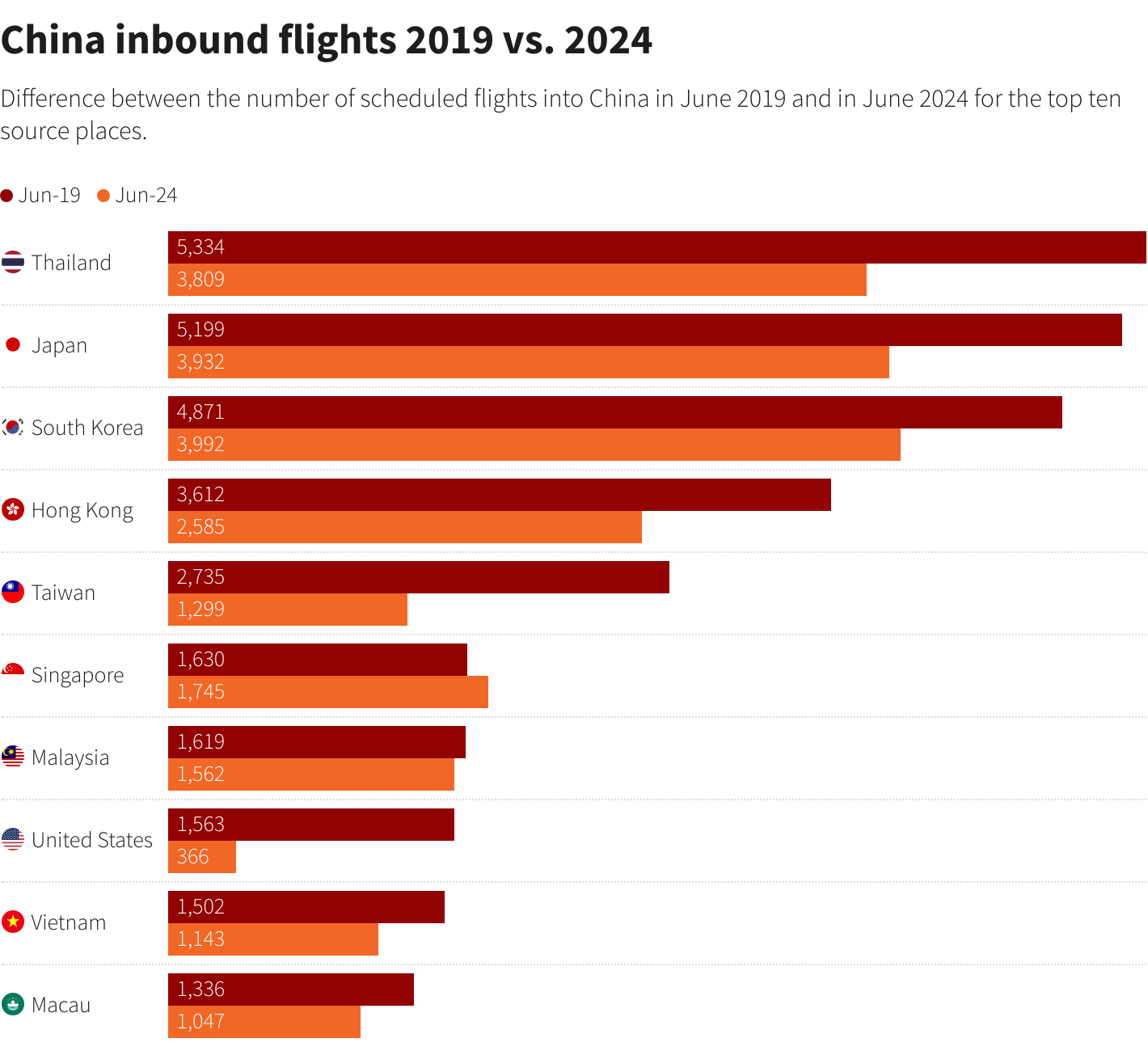As authorities focus on boosting foreign tourism, thousands of visitors rushed to China, encouraged by visa policies and easier access to its unique digital payment services, according to Reuters.
Previously, all foreign visitors had to go through the cumbersome process of applying for a Chinese visa, but now visitors from more than a dozen countries can simply fly in and stay for up to 15 days.
Bookings from several countries with visa policies, including France, Germany, Italy, Malaysia, and Thailand, rose 150% year-on-year as of 24 June, according to China’s largest online travel agency Trip.com. Bookings for July and August would also rise, Trip.com CEO Jane Sun noted.
We’re very excited to see the trend. Lots of people had some misunderstandings about China before they came, but after they arrive, they feel cities like Shanghai are very safe, very clean.
Since December, China has granted visa-free entry to tourists from several countries, including France, Germany, Italy, Spain, Australia, New Zealand, and Poland.
Southeast Asian countries including Thailand, Singapore, and Malaysia also signed agreements with Beijing to facilitate visa-free travel. The week that China announced visa-free travel for visitors from Australia and New Zealand, tour sales jumped 133 per cent from the previous week, Yvette Thompson, general manager for sales and marketing for Australia and New Zealand at tour agency Intrepid Travel, said.
Coming out of COVID, visas are just another level of complexity for travellers. So to remove that complexity, I think is a good move.
Revitalising tourism to China
The recent surge in tourism came after China closed its borders in early 2020 to combat the COVID-19 pandemic and kept them closed until early 2023. Yet even though visa-free policies have been strengthened, far fewer tourists are now travelling to China than before the pandemic.
According to official tourism data, China welcomed a total of 49.1 million foreign visitors in 2019, of which more than a third came for sightseeing and leisure purposes. International tourism revenue reached $131.3 billion that year.
In the first half of 2024, the number of foreign nationals entering China was much lower at 14.6 million. According to the National Immigration Administration, 8.5 million of them entered without a visa, just over half of the total.

Travel agents hoped more foreign tourists would arrive next year as global travel demand and flight schedules recover again to pre-pandemic levels. However, China needs to do more than just abolish visas to incentivise foreigners, experts argue.
Geopolitical tensions and the portrayal of China in some Western media as an aggressor have scared off some tourists. Last month, two separate knife attacks on foreigners also raised security concerns.
Another potential obstacle for foreigners is China’s vast digital infrastructure. Payments for everything from transport tickets to restaurant reservations and visits to tourist sites are made using QR codes linked to local payment apps such as WeChat and Alipay.
That makes daily interactions difficult for foreign bank cardholders. In response, China has allowed foreign bank cards to be linked to Alipay and WeChat, but the system and language barriers remain an obstacle.
